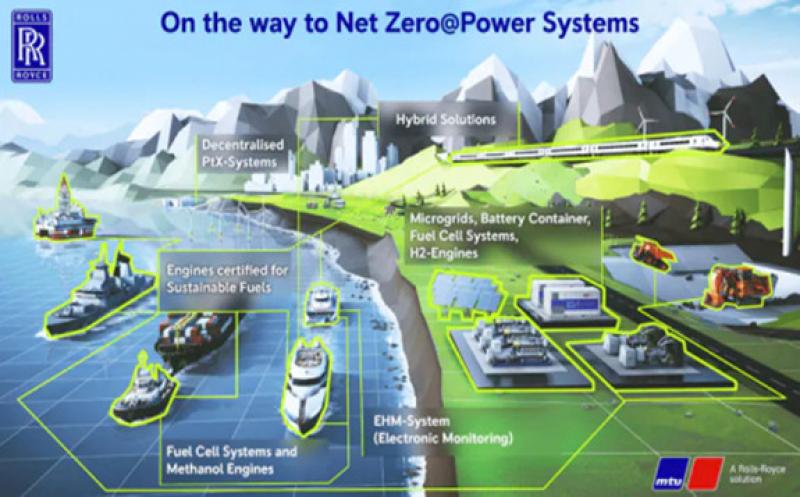Rolls-Royce Power Systems has outlined its road map for climate neutrality: Net Zero@Power Systems. By 2030, the Rolls-Royce business unit is to cut greenhouse gas emissions by 35% compared to its 2019 level through the use of new net zero and zero carbon technologies. This near-term target plays a significant role in Rolls-Royce Group’s ambition to achieve net zero by 2050 at the latest.

A key element in achieving these goals is the certification of the most important mtu engine products, which will run on sustainable fuels from as early as 2023 and then be successively brought into use. The engines are used in a wide variety of applications, for example, in energy supply, commercial shipping, heavy land vehicles, passenger trains and in yachts.
Power Systems is taking a multi-pillar approach to reducing emissions: Besides using sustainable fuels, the Rolls-Royce business unit is also building on new technologies such as CO2-free fuel cell systems. From 2025, these will be used in power generation solutions—from balancing energy for compensating fluctuations in the public grid to continuous power and the provision of emergency power in, for example, hospitals and data centers.
Development engineers are also working on engines powered by hydrogen and methanol as well as on concepts for decentralized Power-to-X systems. Other sustainable solutions such as battery energy storage systems, hybrid propulsion systems for marine and rail applications and microgrids already feature in the Power Systems portfolio for decentralized, environment-friendly power solutions.
In a white paper accompanying the rollout of the road map, Dr Preiss notes that the engines that are the most relevant for Rolls-Royce Power Systems are off-highway engines in a power range starting at 560 kW up to around 10,000 kW.
Besides continuous fuel efficiency and emissions reduction efforts for fossil-fired ICE, the following technological principles have the most leverage for emission reduction and promise substantial GHG emissions improvements, according to Rolls-Royce:
Continue with fossil-fired engines but capture the GHG emissions at the “exhaust pipe”, i.e. capture and store the emissions so that they would never be emitted to the atmosphere. This is not yet relevant for Rolls-Royce applications.
Usage of combustion engines with sustainable, i.e. non-fossil, fuels (synthetic fuels or e-fuels often subsumed under “Power to X” (PtX) fuels such as eDiesel, eHydrogen, etc., but also second-generation biofuels). The aim is to reach a CO2 net-zero operation of combustion engines. Depending on fuel type, it either relates to a fuel that revokes as much CO2 from the air, binding it from biogenic sources or from other CO2 emitters for its production as is emitted by the use in the ICE when burning that fuel. Or it relates to fuels such as hydrogen, that would not at all emit CO2 at the exhaust pipe.
Switch to alternatives for combustion engines. Depending on the application this can be an electric motor, if rotatory mechanical power is needed, or a static solution, like a fuel cell or battery.